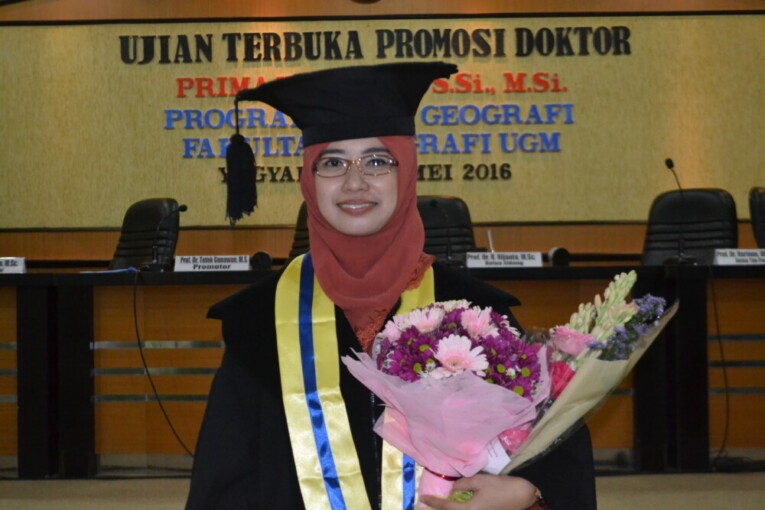
Remote sensing image can be used to obtain data of land characteristics that affect communicable diseases such as malaria, leptopsirosis, and tuberculosis. The Landsat 8 image is used to measure parameters of area vulnerability to communicable diseases. The parameters include land use, vegetation density, land texture, and temperature. These were said by lecturer at Faculty of Geography UGM, Prima Widayani, S.Si., M.Si., in her open doctoral examination at the Faculty on Tuesday (3/5).
She defended her dissertation titled Spatial Modeling of Areas Vulnerable to Communicable Diseases Related to Environment Based on Remote Sensing in Parts of Provinces of Central Java and Yogyakarta. Prima said the mapping of malaria that uses Landsat 8 image to get land use was able to get interpretation accuracy as high as 94.55%. On land texture it reaches 88%. The Leptospirosis uses ALOS AVNIR-2 image to get land information as high as 95.45%, while land texture is 90.09%. “The tuberculosis uses Quickbird image to get land information that produces as high as 97.72% of interpretation accuracy,” she said.
Based on the study of remote sensing image to map area vulnerability to malaria, leptospirosis and tuberculosis, closing data and land use affect the presence of those three diseases because directly and indirectly the closing data and land use reflect the physical environment, biotic and socio-cultural conditions.
Prima’s research in Purworejo area is used to map the area vulnerable to malaria, while in Bantul to Leptospirosis and tuberculosis. The results are the areas vulnerable to malaria are in the middle of Purworejo regency such as Kutoarjo, Banyurip and Ngombol sub-districts. Areas in Bantul regency vulnerable to Leptospirosis and Tuberculosis are Bantul, Jetis and Imogiri sub-district. “Vulnerable areas are mostly in Bantul and Jetis sub-district, while Imogiri sub-district are rather vulnerable and not vulnerable,” she added.


